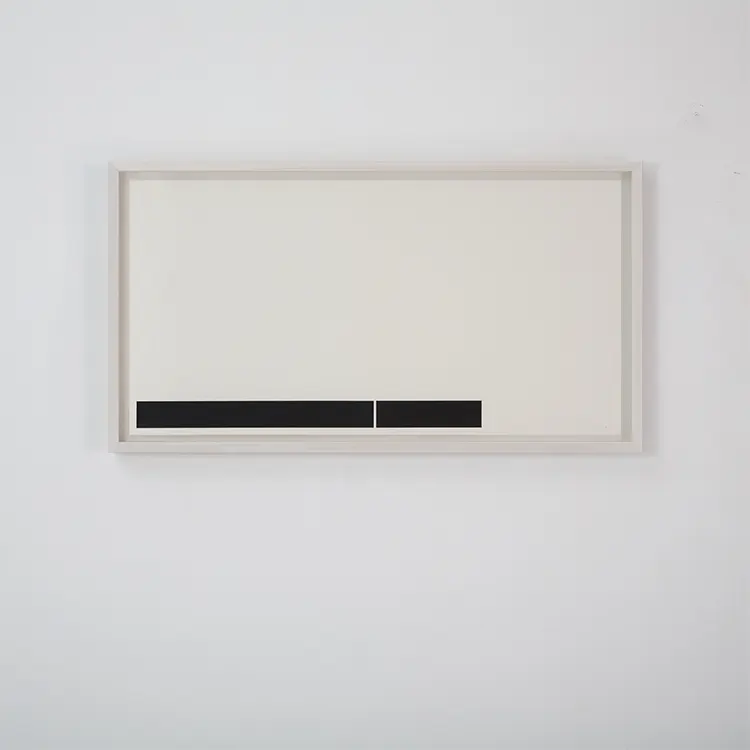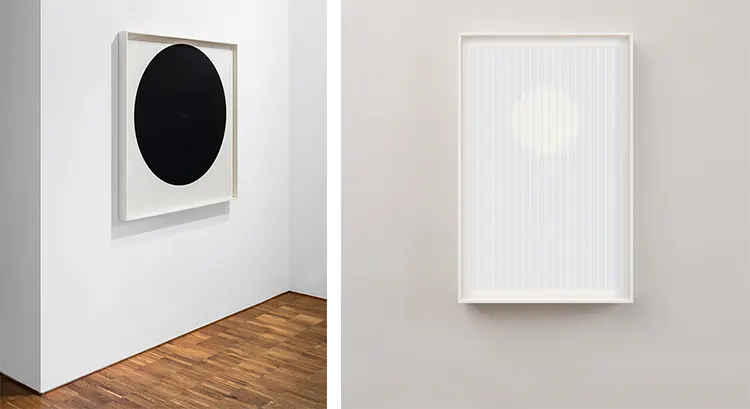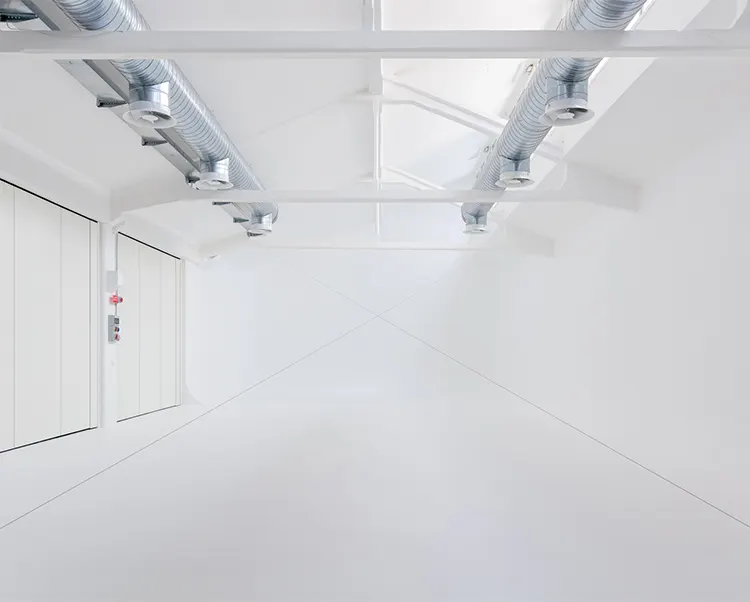“The artists who literally made my heart beat were Kazimir Malevich, Richard Serra, Sol LeWitt, Walter De Maria.”
From Graphic Design to a Signature Style
Franco Cervi started his professional career as a graphic designer right after completing his studies in Architecture. His work in the realm of design was deeply influenced by notable figures such as the Dutch designer Wim Crouwel and the Italian graphic designer AG Fronzoni. For over twenty years, Cervi devoted himself to the creation of logos, corporate identities, and typographic characters. It was during this period that he developed a deep affinity for the principles of minimalism. He found it not only compelling but also challenging to subtract elements rather than accumulate them, particularly in a world that is continuously overwhelmed with signs and symbols. This critical realization played a crucial role in shaping Cervi’s unique approach to graphic design, an approach that is defined by a steadfast commitment to simplicity and reduction. As time went on, this signature style in graphic design naturally evolved into Cervi’s later artistic pursuits, marking a significant progression in his creative journey.

Franco Cervi: The Spark of Minimalism and a Journey into Art
The transition into the world of art for Franco Cervi was sparked by a profound experience at the Villa Panza di Biumo, a site highly regarded as the epicenter of minimalism in Italy. It was at this location that Cervi found himself deeply moved by the works of renowned artists such as Robert Irwin, James Turrell, and Alfonso Fratteggiani Bianchi. This pivotal moment served as the catalyst for his determination to embark on a personal artistic journey, despite the considerable challenges that he knew lay ahead. Yet, Cervi’s resolve remained unshaken. In his artistic creations, Cervi delves deeply into the core of existential thought. This theme is articulated through a process of numerical decoding, which he interprets as the genetic mapping of infinity. This unique approach is shaped by his extensive studies in Platonic philosophy and Pythagorean geometry. For Cervi, the ultimate goal is to capture the essence of a thought or concept at its most fundamental level, a point at which no further simplification is possible, and where both concept and form merge into a harmonious and resolving synthesis. This quest for the most elemental expression of thought is a defining characteristic of Cervi’s artistic style.

A Methodical Workspace and Influential Masters
In the confines of his workspace, Franco Cervi finds that an atmosphere of concentration, silence, and solitude is imperative. It is his preference to be surrounded by an uncluttered, sterile environment, much akin to an operating theatre, where each tool and instrument is meticulously arranged in its designated place. For Cervi, the act of creating art is not something that can be interspersed with other obligations; rather, it demands dedicated and undivided attention. Hence, he chooses to allocate specific portions of his day, predominantly in the mornings, to immerse himself completely in his craft.
The artistic journey of Cervi has been significantly shaped by a number of past and present masters. He has drawn considerable inspiration from the works of Kazimir Malevich, Richard Serra, Sol LeWitt, and Walter De Maria. Their innovative approaches and distinct styles have left an indelible mark on his artistic sensibilities. In addition to these luminaries, he also holds a deep respect for contemporaries such as Günter Umberg and Alain Biltereyst, whose work he admires and finds influential.

Franco Cervi: ‘Presence no. 1 (2021)’ and the Material Choices
Franco Cervi holds a particular affinity for ‘Presence no. 1 (2021)’, a distinct artwork composed of two steel cables stretched across a uniform space. This thought-provoking installation compels its observers to heighten their sensory perception, contort their physical form, and navigate space from unconventional perspectives. It serves as a metaphor for the invisible yet potent forces of social conditioning, mental dogmas, and cultural impositions that, despite often being dismissed as nonexistent barriers, wield significant power in shaping our entire existence.
In his artistic practice, Cervi predominantly utilizes three materials: paper, aluminum, and Belgian black marble. He is drawn to paper for its simplicity and immediacy of execution, as well as its light yet durable nature. Aluminum, whether in slabs or blocks, appeals to him for its pristine surface, lightweight, extreme rigidity, and cool tactile quality. Lastly, Belgian black marble, even colder and significantly heavier, evokes in him a sense of timelessness.
Cervi is in the midst of a project centered around the human form. However, he is inclined to withhold further details, asserting that it is a subject that necessitates firsthand observation for true comprehension. This reticence underscores the artist’s belief in the power of visual communication and the limitations of language in conveying the intricacies of his work.





